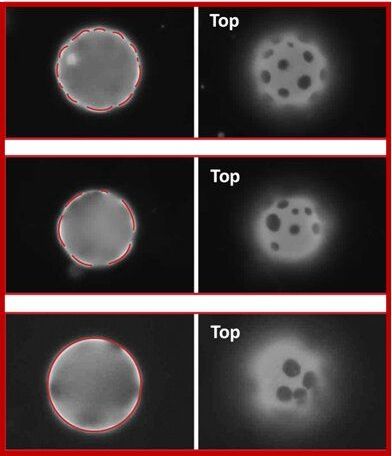A team of polymer science and engineering researchers at the University of Massachusetts Amherst has demonstrated for the first time that the positions of tiny, flat, solid objects integrated in nanometrically thin membranes—resembling those of biological cells—can be controlled by mechanically varying the elastic forces in the membrane itself. This research milestone is a significant step toward the goal of creating ultrathin flexible materials that self-organize and respond immediately to mechanical force.
The team has discovered that rigid solid plates in biomimetic fluid membranes experience interactions that are qualitatively different from those of biological components in cell membranes. In cell membranes, fluid domains or adherent viruses experience either attractions or repulsions, but not both, says Weiyue Xin, lead author of the paper detailing the research, which recently appeared in Science Advances. But in order to precisely position solid objects in a membrane, both attractive and repulsive forces must be available, adds Maria Santore, a professor of polymer science and engineering at UMass. In the Santore Lab at UMass, Xin used giant unilamellar vesicles, or GUVs, which are cell-like membrane sacks, to probe the interactions between solid objects in a thin, sheet-like material. Like biological cells, GUVs have fluid membranes and form a nearly spherical shape. Xin modified the GUVs so that the membranes included tiny, solid, stiff plate-like masses.
